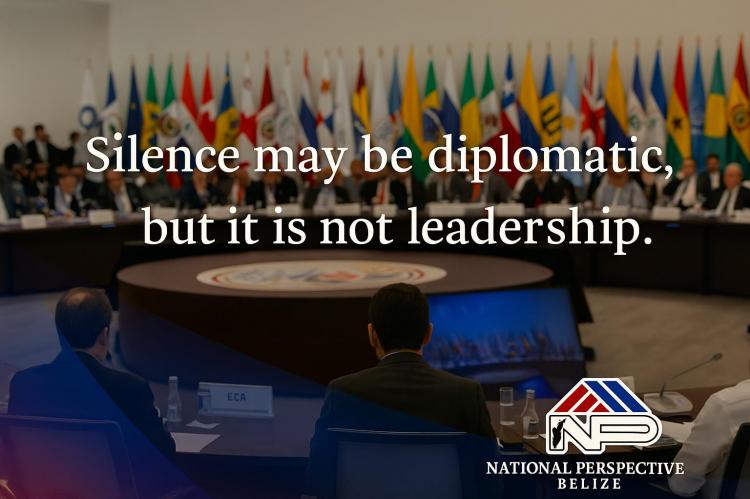Santa Marta Declaration: Latin America Reclaims Its Voice — and Belize Must Listen
By Omar Silva | Editor/Publisher
National Perspective Belize Feature Article
www.nationalperspectivebz.com
A Meeting Called Under Pressure
When leaders and foreign ministers from 33 Latin American and Caribbean nations and 27 European Union members gathered in Santa Marta, Colombia, on 9 November 2025, the atmosphere was charged. The summit was scheduled as the IV CELAC–EU Summit, yet circumstances gave it the weight of an emergency meeting.
Only days earlier, U.S. naval and aerial operations in Caribbean waters had reignited old debates about sovereignty and great-power intrusion. The venue chosen by Colombian President Gustavo Petro—a city symbolically called the Heart of the World—was deliberate: Latin America and the Caribbean were again demanding to be heard.
Objectives That Re-Centred the Region
At its core, the Santa Marta Declaration sought to reclaim agency for the region. Three broad aims shaped the agenda:
- Defend multilateralism and autonomy.
The 60 delegations reaffirmed adherence to the U.N. Charter, rejecting unilateral sanctions and extra-territorial military actions that violate sovereignty. For Petro and most CELAC members, this was an unmistakable rebuke to decades of hemispheric dependency.
- Rebuild a fair partnership with Europe.
The EU promised “a relationship of equals,” anchored in climate action, digital transformation, food security, and technology transfer—an attempt to reset a dialogue often overshadowed by U.S. and Chinese influence.
- Create security cooperation grounded in law, not force.
A new Alliance for Citizen Security will coordinate efforts against organized crime, drug trafficking, and cyber-threats while pledging strict observance of human rights. It implicitly rejects the notion that security must come at the cost of liberty.
What Was Agreed
The final 52-point Santa Marta Joint Declaration, signed by 58 of 60 nations (Venezuela and Nicaragua withheld endorsement), laid out the following commitments:
- Global Governance Reform: Support for a re-balanced international financial system and greater voice for developing nations.
- Climate & Energy: Joint adherence to the 1.5 °C target, cooperation on renewable energy grids, Amazon and marine protection.
- Trade & Development: Revival of long-stalled trade frameworks such as the EU–Mercosur deal and expansion of investment under the EU’s Global Gateway initiative.
- Human Rights & Democracy: Agreement that political stability must rest on independent institutions, free elections, and transparent governance.
- The Care Economy Pact: Recognition of unpaid care work—mostly borne by women—as a pillar of economic life and a target for social-investment policies.
A Zone of Peace — or a Zone of Pressure?
While couched in diplomatic tones, the meeting underscored a fracture line: most CELAC states want the Caribbean Sea to remain a Zone of Peace, yet several external powers—chiefly the United States—continue to operate there militarily.
Trinidad and Tobago stood alone among CARICOM members in defending a U.S. presence; others, including Belize, have remained officially silent. That silence, however, is becoming untenable as the region’s collective voice grows louder.
Implications for Belize
For Belize, a founding CELAC member that often keeps to the margins of hemispheric debates, the Santa Marta Declaration carries at least four strategic lessons:
- Diplomatic Alignment: Belize must decide whether to stand with a united Latin American call for multilateral respect or to cling to inherited alliances that dilute its autonomy.
- Economic Leverage: The EU’s renewed investment appetite could finance renewable-energy projects, agro-industry, and digital infrastructure—if Belize presents credible, transparent plans.
- Security Philosophy: The new Citizen Security Alliance offers an alternative to imported “hard-hand” models; Belize could champion community-centred policing and legal proportionality instead of recurring states of emergency.
- Regional Leadership: With its bilingual advantage and democratic record, Belize can serve as a bridge between the English-speaking Caribbean and Spanish-speaking Central America in CELAC’s institutional reform.
A Continental Turning Point
Nearly every Latin American delegation echoed the same refrain: “Our time has come to speak for ourselves.”
The Declaration of Santa Marta thus stands as both document and declaration of intent—a collective decision to re-Latinize global dialogue. Whether that rhetoric translates into lasting institutions will depend on political courage and public vigilance across the hemisphere.
Belize’s Moment of Choice
Belize cannot afford to watch history unfold from the sidelines.
If CELAC succeeds in articulating a common foreign-policy voice, small states like ours will finally gain the leverage long denied in bilateral dealings. But if old divisions resurface, we will again become spectators to others’ agendas.
The Santa Marta Summit reminds us: sovereignty is not declared—it is practiced.
Belize must now decide how loudly it wishes to speak within the chorus of the Americas.
- Log in to post comments

